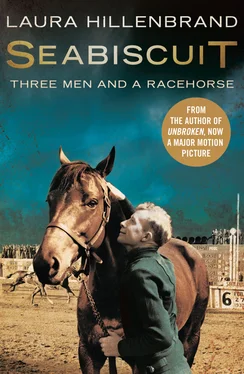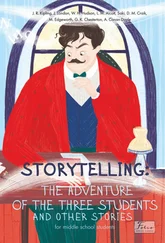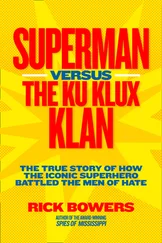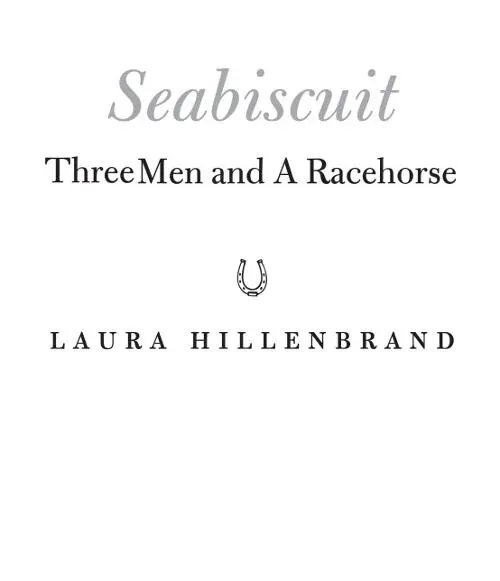
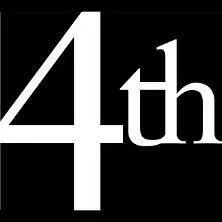
Fourth Estate
An imprint of HarperCollins Publishers Ltd. 1 London Bridge Street London SE1 9GF
www.harpercollins.co.uk
This eBook first published in Great Britain by Fourth Estate in 2014
First published in Great Britain by Fourth Estate in 2001
Copyright © Laura Hillenbrand 2001
PS Section Copyright © Annabel Wright 2007, except ‘The Lure of the Track’ by Laura Hillenbrand © Laura Hillenbrand 2007
PS is a trademark of HarperCollins Publishers Ltd.
Laura Hillenbrand asserts the moral right to be identified as the author of this work
A catalogue record for this book is available from the British Library
Cover photographs © Bettman/Corbis; Shutterstock.com(sky and texture). Design by Kate Gaughran
All rights reserved under International and Pan-American Copyright Conventions. By payment of the required fees, you have been granted the non-exclusive, non-transferable right to access and read the text of this ebook on-screen. No part of this text may be reproduced, transmitted, down-loaded, decompiled, reverse engineered, or stored in or introduced into any information storage and retrieval system, in any form or by any means, whether electronic or mechanical, now known or hereinafter invented, without the express written permission of HarperCollins ebooks
HarperCollins Publishers has made every reasonable effort to ensure that any picture content and written content in this ebook has been included or removed in accordance with the cotractual and technological constraints in operation at the time of publication
Source ISBN: 9781841150925
Ebook Edition © JANUARY 2014 ISBN: 9780007374021
Version: 2016-09-08
From the reviews of Seabiscuit:
‘A terrific yarn, beautifully written’
SIMON BARNES, The Times
‘A first-rate piece of storytelling, leaving us not only with a vivid portrait of a horse but with a fascinating slice of American history as well’
MICHIKO KAKUTANI, New York Times
‘A terrific story … Hillenbrand not only ties divergent personalities into a fast-moving narrative but also shows an extraordinary talent for describing a horse race so vividly that the reader feels like the rider’
RON FIMRITE, Sports Illustrated
‘Hillenbrand tells the story of the triumphs and tribulations of her cast of misfits with flair and skill … a rip-roaring narrative’
Sunday Times
Charles Howard, Red Pollard, and Tom Smith (KEENELAND-COOK)
For Borden
“Nobody ever lives their life all the way up except bullfighters.”
—ERNEST HEMINGWAY, THE SUN ALSO RISES
Cover
Title Page
Copyright
Praise
Dedication
Epigraph
Preface
PART I
1. The Day of the Horse Is Past
2. The Lone Plainsman
3. Mean, Restive, and Ragged
4. The Cougar and the Iceman
5. A Boot on One Foot, a Toe Tag on the Other
6. Light and Shadow
PART II
7. Learn Your Horse
8. Fifteen Strides
9. Gravity
10. War Admiral
11. No Pollard, No Seabiscuit
12. All I Need Is Luck
13. Hardball
14. The Wise We Boys
15. Fortune’s Fool
16. I Know My Horse
17. The Dingbustingest Contest You Ever Clapped an Eye On
18. Deal
19. The Second Civil War
PART III
20. “All Four of His Legs Are Broken”
21. A Long, Hard Pull
22. Four Good Legs Between Us
23. One Hundred Grand
Epilogue
Notes
P.S. Ideas, interviews & features …
Read On…
Index
Acknowledgments
About the Author
About the Publisher
In 1938, near the end of a decade of monumental turmoil, the year’s number-one newsmakerwas not Franklin Delano Roosevelt, Hitler, or Mussolini. It wasn’t Pope Pius XI, nor was it Lou Gehrig, Howard Hughes, or Clark Gable. The subject of the most newspaper column inches in 1938 wasn’t even a person. It was an undersized, crooked-legged racehorse named Seabiscuit.
In the latter half of the Depression, Seabiscuit was nothing short of a cultural icon in America, enjoying adulation so intense and broad-based that it transcended sport. When he raced, his fans choked local roads, poured out of special cross-country “Seabiscuit Limited” trains, packed the hotels, and cleaned out the restaurants. They tucked their Roosevelt dollars into Seabiscuit wallets, bought Seabiscuit hats on Fifth Avenue, played at least nine parlor games bearing his image. Tuning in to radio broadcasts of his races was a weekend ritual across the country, drawing as many as forty million listeners. His appearances smashed attendance records at nearly every major track and drew two of the three largest throngs ever to see a horse race in the United States. In an era when the United States’ population was less than half its current size, seventy-eight thousand people witnessed his last race, a crowd comparable to those at today’s Super Bowls. As many as forty thousand fans mobbed tracks just to watch his workouts, while thousands of others braved ice storms and murderous heat to catch a glimpse of his private eighty-foot Pullman railcar. He galloped over Manhattan on massive billboards and was featured week after week, year after year, in Time , Life , Newsweek , Look , Pic , and The New Yorker. His trainer, jockey, and owner became heroes in their own right. Their every move was painted by the glare of the flashbulb.
They had come from nowhere. The horse, a smallish, mud-colored animal with forelegs that didn’t straighten all the way, spent nearly two seasons floundering in the lowest ranks of racing, misunderstood and mishandled. His jockey, Red Pollard, was a tragic-faced young man who had been abandoned as a boy at a makeshift racetrack cut through a Montana hay field. He came to his partnership with Seabiscuit after years as a part-time prizefighter and failing jockey, lugging his saddle through myriad places, getting punched bloody in cow-town boxing rings, sleeping on stall floors. Seabiscuit’s trainer, a mysterious, virtually mute mustang breaker named Tom Smith, was a refugee from the vanishing frontier, bearing with him generations of lost wisdom about the secrets of horses. Seabiscuit’s owner, a broad, beaming former cavalryman named Charles Howard, had begun his career as a bicycle mechanic before parlaying 21 cents into an automotive empire.
In 1936, on a sultry August Sunday in Detroit, Pollard, Smith, and Howard formed an unlikely alliance. Recognizing the talent dormant in the horse and in one another, they began a rehabilitation of Seabiscuit that would lift him, and them, from obscurity.
For the Seabiscuit crew and for America, it was the beginning of five uproarious years of anguish and exultation. From 1936 to 1940, Seabiscuit endured a remarkable run of bad fortune, conspiracy, and injury to establish himself as one of history’s most extraordinary athletes. Graced with blistering speed, tactical versatility, and indomitable will, he shipped more than fifty thousand exhausting railroad miles, carried staggering weight to victory against the best horses in the country, and shattered more than a dozen track records. His controversial rivalry with Triple Crown winner War Admiral culminated in a spectacular match race that is still widely regarded as the greatest horse race ever run. His epic, trouble-plagued four-year quest to conquer the world’s richest race became one of the most celebrated and widely followed struggles in sports. And in 1940 after suffering severe injuries that were thought to have ended their careers, the aging horse and his jockey returned to the track together in an attempt to claim the one prize that had escaped them.
Читать дальше
